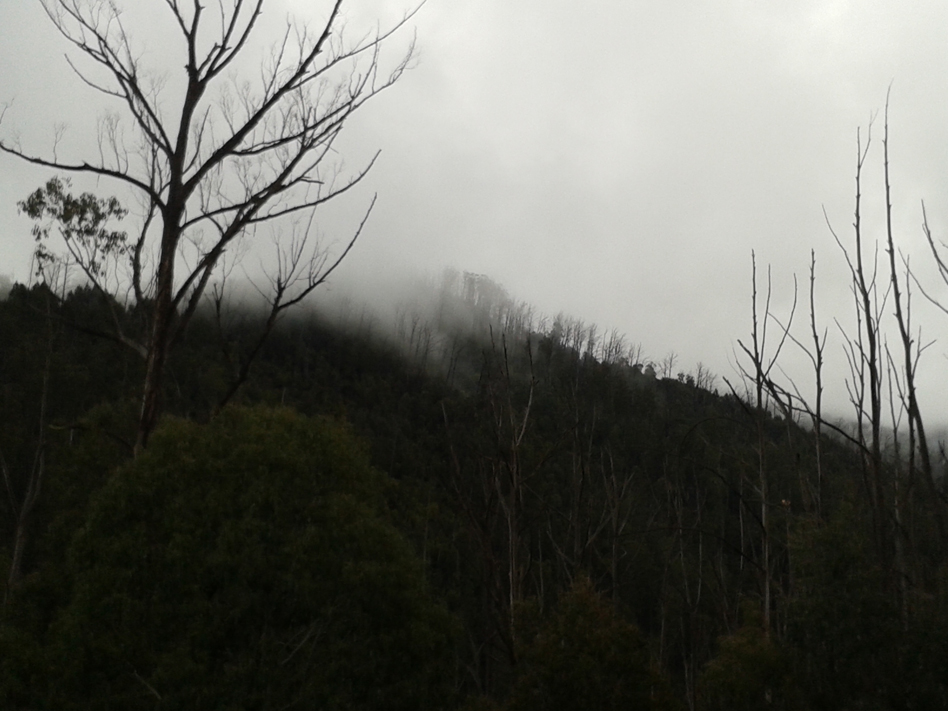()
Variable conditions are one of the things that makes Bogong such an attractive place to work in and to work with. Inevitably that’s going to mean a day like today, where the gaps in the rain are too brief to accomplish much outside. It’s a break in the physical, active part of the making process, and if nothing else serves as an opportunity to think (or in some cases rethink) how things have played out so far.
Yesterday’s weather was variable too, but luckily without any rain, making it a good opportunity to place some solar-powered devices in the bush and record them responding to the fluctuating amount of energy there. One of the interesting effects of doing this is the way it changes the rationale around how photovoltaic (or solar) panels are used. Normally you’d position a solar panel so that there is the minimum number of physical obstacles between it and the sun (preferably none) so that the supply of energy to the panel is as constant as possible. But with these devices, the more inconstant the supply of energy the more interesting the response. And instead of highlighting the role of the sun as the producer of all this energy, they draw attention to the clouds, and the rate they move at.
Photons travel for eight and a bit minutes at the speed of light from the sun to the earth, where, only hundreds of metres above the ground, clouds become the arbiters as to how much of that energy reaches the ground. The clouds are formed by evaporation and move in wind currents, both of which are naturally solar-powered phenomena, so the clouds act like feedback. Ironically, the device I recorded performing in the sun yesterday is a small feedback circuit.
Not all of the photons I’ve been capturing have travelled such a long distance. A storm after dinner on Sunday evening meant that I was able to register the energy spikes from lightning strikes using a PV panel. When listened to they produce brief but massive bursts of electrical sound. To some ears they might seem more like glitches or interference - something that would spoil a recording rather than be the content of one. But I guess that’s one of the features of what I’m doing - sometimes just getting a signal of any kind is enough. After all, the work is in the process of exploring these exchanges between technologies and environments, mediated through a range of energies. Using a solar panel to make a sound work rather than using, say, a microphone, demonstrates that to a degree, and enacts it, too. Plus it introduces a new idea about what a solar panel might be used for, demonstrating that technologies are variable, too - just like the weather.
